Waste not, want not is a good proverb to live by. In a world with finite resources, we all have to make the most of what we have to live wisely. This is even more important when food is involved.
You shouldn’t cook more food than you’re planning to eat. If at all possible, you should also prepare food in such a way that waste is minimized.
To do that, you will need access to the best boning knife. With the right boning knife in hand, you will be able to properly clean any cut and get the most meat possible.
Product | Name | Editor's Rating | Price |
|---|---|---|---|
Mercer Culinary Millenia Curved Boning Knife | 5 out of 5 | ||
Mercer Culinary Genesis Forged Flexible Boning Knife | 5 out of 5 | ||
Chicago Cutlery Walnut Tradition High-Carbon Blade Boning Knife | 4.5 out of 5 | ||
Victorinox Fibro Pro Boning Knife | 4 out of 5 | ||
Zelite Infinity Boning Knife | 4.5 out of 5 |
6 Best Boning Knife Reviews
1. Mercer Culinary Millenia Curved Boning Knife
Many people prioritize sharpness when shopping for boning knives. I would also urge you to place a great deal of importance on how safe the knife is. In the case of the Millenia Curved Boning Knife from Mercer Culinary, you are getting a well-designed kitchen tool. It is crafted with keeping people safe in mind.
The textured points on the knife’s handle keep your fingers in the right position. Even if you’re not holding the knife properly, it should not slip from your grasp easily. The handle of the knife is also designed in a way that it fits snugly into your hand.
You also receive increased protection from the finger guard.
Key Features:- Finger guard and finger points are included to secure the position of your hand
- Knife handle is made out of two different materials
- Blade made out of Japanese steel can be quickly sharpened
- Does not easily stain
2. Mercer Culinary Genesis Forged Flexible Boning Knife
Trust me. When you get a hold of a good boning knife, you will want to use it for just about everything. Even tasks that can be handled easily by an ordinary kitchen knife are ones you will want to take on with your boning knife.
The issue with using your boning knife excessively is it could sustain lasting damage more easily.
The Genesis Forged Flexible Boning Knife from Mercer Culinary is designed to combat that potential problem.
Manufacturers have opted to use German steel in the making of this knife. It’s important to point that out because German steel is more resistant to rust and discoloration. You can use this boning knife every day and it will still look great each time you bust it out.
Key Features:- German steel is used in this knife’s blade
- Comfortable santoprene material used in the handle
- Taper-ground edge makes the knife easier to use
- Knife is not prone to staining and discoloration
3. Chicago Cutlery Walnut Tradition High-Carbon Blade Boning Knife
There’s nothing wrong with a classically made and styled boning knife and that’s exactly what you’re getting in the Walnut Tradition High-Carbon Blade Boning Knife from Chicago Cutlery.
I truly adore the way this knife looks. Everything from the color of the handle to the inclusion of the three rivets works to give this item a distinguished appearance. It’s also important to note that the rivets provide needed stability along with aesthetic value.
The taper-ground edge makes this knife easier to use. You can be confident that your fingers won’t be put in harm’s way.
As for the blade itself, high-carbon stainless steel has long ago proven to be a highly durable and functional material. The high-carbon stainless steel makes its presence felt in this knife.
Key Features:- Classic design is used for this knife
- Taper-ground edge offers better control
- Blade is made out of high-carbon stainless steel
- Triple brass rivets line the knife’s handle
4. Victorinox Fibro Pro Boning Knife
Animal carcasses often don’t fan out in straight lines. To properly butcher and clean the carcass, you will need to make angled and curved cuts. Those adhere better to the specific positions of the bones. The Fibro Pro Boning Knife from Victorinox is designed to meet that very challenge.
You’ll quickly notice that this knife has a pronounced curve. It bends right at the point where the blade and handle meet. The curved design will prove immensely helpful when you’re trying to get into the various nooks and crannies of whichever cut of meat you are trying to clean.
Smartly, the manufacturers decided to include a textured and slip-resistant handle. It will prevent any accidents from taking place as you’re cutting through meat.
Key Features:- Pronounced curve assists with complex cuts
- Features a textured handle that is also ergonomically designed
- Anti-slip handle remains effective while wet
- Equipped with a semi-stiff stainless steel blade
5. Zelite Infinity Boning Knife
We talked earlier about how you can’t go wrong with a classically styled knife. Well, there are also all kinds of good things to be said about a modern boning knife. The Boning Knife from Zelite Infinity is a testament to that.
The way the appearance of the knife’s tapered edge blends seamlessly into the blade is visually stunning.
There’s more to this knife than just its good looks though.
You should have no trouble working your way through various types of meat with this knife’s blade leading the way. It also helps that the blade is non-stick. The non-stick blade cuts down significantly on the amount of meat typically wasted. The meat taken off the bone remains intact instead of ending up on your knife.
Key Features:- Gorgeous modern design is featured by this knife
- Blade is made out of non-stick Japanese steel
- Triple riveted handle offers great durability
- Rounded handle provides more comfort
6. Dalstrong Gladiator Series Boning Knife
You want the boning knife you’re using to be highly flexible while remaining stable as well. That’s a winning combination when it comes to boning knives. You’re getting that with the Gladiator Series Boning Knife from Dalstrong.
The high-carbon German steel blade will bend as needed as you cut around the corners of the carcass.
The ability to bend will ensure that the meat is properly extracted from the bone.
To complement the flexible blade, the manufacturers included a pakkawood handle that feels remarkably firm in your hands. The three rivets offer additional stability. The knife will retain its firmness even as it bends to extreme angles because of the handle.
The handle is also laminated. That helps keep it protected from bacteria.
Key Features:- High-carbon German steel blade is capable of bending significantly
- Pakkawood handle feels substantial in your hands
- Tapered edge improves the durability of this knife
- Features a hand-polished edge
What Differentiates the Boning Knife from the Other Types of Cutlery in Your Kitchen?
The standard boning knife differs from many of the other knives you have in your kitchen in a few notable ways.
First off, it is substantially slimmer than most of the other knive frequently used inside kitchens. Boning knives have to be on the thinner side. Otherwise, they will be incapable of reaching into the crevices of an animal carcass.
Boning knives are also usually quite compact. Though, you may find variations of it that feature slightly longer blades. They also feature a sharp end point that is useful for creating holes in the meat.
The boning knife is designed primarily for carefully detaching the raw meat from the bone. As much as possible, you want to minimize the amount of food waste you produce. A high quality boning knife will help out a lot with that goal.
How does a Boning Knife Differ from a Fillet Knife and a Gokujo Knife?
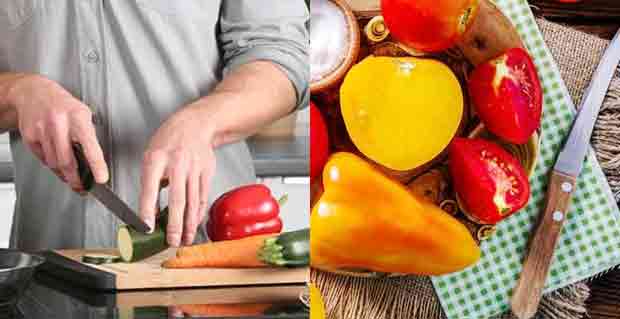
If you don’t have a lot of experience when it comes to shopping for cutlery, you may eventually run into a bit of an issue while looking for a best boning knife. Specifically, you may find yourself struggling to see the difference between a boning knife, a fillet knife, and a gokujo knife.
Let's start by reminding ourselves of what a boning knife is designed for. This particular tool is meant to be used for separating meat from bone. It’s supposed to be a precise tool, but it’s not expected to be the most delicate knife in your kitchen drawer.
Boning knives are at their best when they are used to properly butcher sides of pork, beef, and different types of game meat. The blade featured on the boning knife is at its best when slicing through firmer flesh.
Fillet knives can also be used to separate meat from bone. However, they will struggle more at doing so. If you want to make the most out of your fillet knife, you will need to use it for cleaning cuts of chicken or for working on fish. For example, the folks who don’t want skin on their pieces of fish will want to use a fillet knife.
Gokujo knives are harder to find. They attempt to bring together the best features of the boning and fillet knives, but they aren’t always successful at doing so. Gokujo knives are also at their best when they are used on fish.
What Should I Use a Boning Knife for?
The boning knife is most useful for the purpose of removing the meat from the bone.
When a butcher gets a new side of meat, he/she will need to break it down properly before cuts of it can be sold to customers. For hacking through the larger portions of the meat and certain segments of bone, the butcher can rely on the thicker and bigger knives.
However, they cannot limit themselves to only using those larger knives. Doing so will render them unable to create the clean cuts that appeal the most to customers. The boning knife is better for creating cleaner cuts.
Should I Get a Boning Knife with a Flexible or Semi-Stiff Blade?
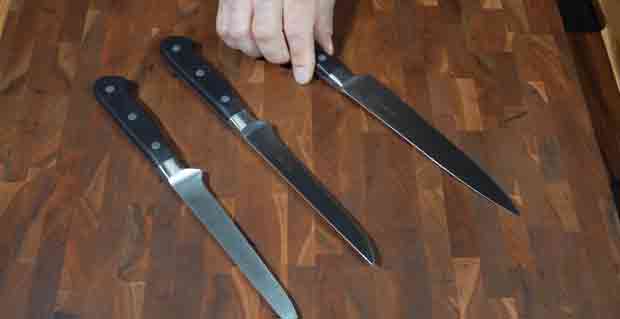
Boning knives can differ from one another in terms of the type of blade they feature. Some boning knives are equipped with flexible blades, while others make use of semi-stiff variants. The type of blade you will need will depend on your plans for the knife.
Flexible blades are great for cutting thinner cuts of meat. They are what you’ll need to reach for if there’s a troublesome bit of meat that you are struggling to remove.
The semi-stiff blades are going to prove more helpful if you’re working with a larger cut of meat. These blades will bend, but they are still firm enough to stand up to thicker pieces of flesh.
Also, if you don’t have plenty of experience working with boning knives, I would go with one that features a semi-stiff blade. They are safer to use because they will not easily break even when excess pressure is applied.
The Things You Need to Take a Closer Look to Ensure You Get the Best Boning Knife for Your Kitchen
Finding a high quality boning knife is pretty easy. Many reputable manufacturers have gotten involved in the industry. Their products are capable of delivering great performance.
Finding a best boning knife that will work ideally in your kitchen is a bit tougher. However, you can make the task easier by taking into account the different factors below.
The Type of Blade
Once again, you will need to determine which type of blade you must have in your best boning knife. As noted earlier, you can choose from either flexible or semi-stiff blades.
Semi-stiff blades are more versatile and they are also safer to use. Stick with them if you want to work efficiently and safely inside your kitchen.
The Size of the Blade
The blades included in boning knives can range in size from five inches all the way up to nine inches. The longer blades are more helpful if you intend to work more with bigger pieces of meat.
Smaller blades are more flexible and they are also easier to control.
The Type of Handle
The materials used to make the knife’s handle are likely what you’ll notice first. All kinds of materials are utilized for crafting the knife’s handle. The most popular options by far are wood and plastic.
Wood is great because it is sturdy and features a distinguished look. A finely crafted wooden handle can make any type of best boning knife look like it belongs inside a professional kitchen.
The downside to wooden handles is that it’s easier for oils and other types of liquid to seep into them. Wooden handles may end up breaking earlier than their plastic counterparts.
Plastic knife handles feature a more generic look. They make up for that by being more durable. You can keep working with them for hours without worrying about getting yourself injured. Plastic knife handles tend to get slippery when used for a long time though.
Rubber knife handles feature great durability while remaining user-friendly.
You should also take into consideration what kind of tang the knife you’re looking at features.
Ideally, the knife you’re considering purchasing is of the full tang variety. In full tang knives, the blades extend all the way to the end of the handle. The full tang knives are more stable. Even when they are bending at extreme angles, you remain completely in control of what is happening.
You will also find partial tang knives, narrowing tang knives, and skeletonized tang knives among numerous other variants. Though those other knife handle designs have their own strong points, they will still fail to offer as much as control as full tang knives.
The Design of the Blade
Aside from material makeup and hardness, the blades of boning knives can also differ from one another in terms of their design. The two most prevalent knife shapes are straight and curved. We’ll get into why the shape of the blade matters a bit later in this article.
The Material Makeup of the Blade
Most of the boning knives you’ll see sold in stores feature stainless steel blades. You can’t blame the manufacturers for using that specific material. Stainless steel can be finely sharpened and it is also quite resistant to harmful elements such as rust. High-carbon stainless steel blades are even better because they feature all the great qualities of stainless while also being lighter in weight.
The Shape of the Blade
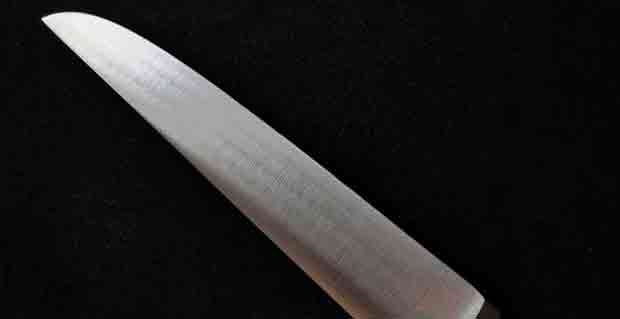
Aside from material makeup and hardness, the blades of boning knives can also differ from one another in terms of their shape. The two most prevalent knife shapes are straight and curved. We’ll get into why the shape of the blade matters a bit later in this article.
The Price of the Knife
You don’t necessarily have to splurge to ensure that you get a great boning knife. Thanks to the influx of more manufacturers, boning knives have become more affordable. Even if you have a smaller budget, you should still be able to find a best boning knife.
The Safety Features of the Knife
It’s now time to discuss the different safety features often included on boning knives.
The bolster is one of those safety features. If you’re unfamiliar with the knife bolster, it’s that little piece of metal often positioned between the blade and the handle of the knife. Some of the knife bolsters transition smoothly from the handle to the blade, while others jut out.
Think of the bolster as a safety guard that keeps your fingers shielded from the blade. You will want to see this present on your boning knife.
You will also want a knife with a slip-resistant handle. A slip-resistant handles could end up saving you from injury if you tend to bend the boning knife a lot.
Full tang knives are also the safest variants of boning knives. They are easier to balance in your hands. You will also be able to use them for extended periods of time without feeling fatigued.
The Weight of the Knife
You don’t need to spend a lot of time worrying about how heavy the boning knife is. Most of these boning knives are on the lighter side. Even the longer ones still fall within the same weight range.
When considering the weight of the boning knife, you’ll be better off focusing on how well balanced it is.
In most knives, you want the blade to perfectly balance out the handle. That structure will make the whole knife easier to control. You do not want to see the same thing in a boning knife.
In a boning knife, the handle should be considerably heavier than the blade. The heavier handle will make it easier for you to position the blade properly whenever you’re slicing something.
The Versatility of the Knife
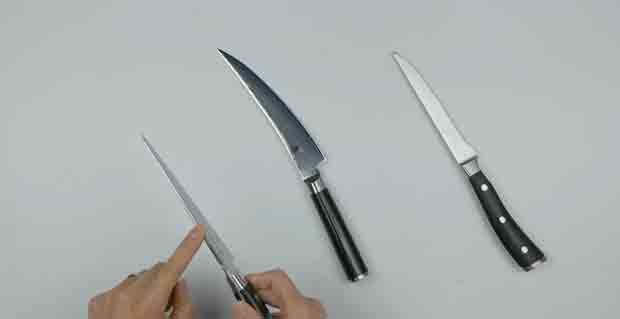
It would be great if your best boning knife can easily detach meat from bones, but can you really be satisfied with a kitchen tool that only does one thing well? Try to look for boning knives also capable of handling regular slicing. They can be more useful inside your kitchen.
The Maintenance Required for the Knife
I don’t want to end up stuck with a boning knife that I will end up having to hone or sharpen frequently. Choose a best boning knife with a more durable blade – one that can go for weeks without needing to be honed and for months without needing to be sharpened.
Why You May Need to Use a Boning Knife
Butchers can use the boning knife to clean up the cuts of the meat. Rib portions and racks of meat specifically need to be cleaned using a boning knife to make them more presentable.
To be clear, boning knives can be helpful to more than just butchers. If you need to debone a piece of meat before using it in a dish, a boning knife will be able to assist you. You can also use the boning knife to prepare that you are planning to grind.
Also, butchers may sometimes fail to thoroughly clean the cut of meat you bought. With a boning knife, you can fix those oversights and still present a beautiful meal to your family and friends.
Which Boning Knife Handle Material is the Best Option?
The handles of boning knives are typically made out of wood, plastic, and rubber.
A wooden handle is what you’ll want if you are on the market for the best looking boning knife. These handles are also easier to grasp. They are more prone to breaking especially if you drop them however.
Plastic handles excel in the durability department and their look can also be customized. The issue with plastic handles is they can get slippery. Once the oils cover a plastic knife handle, you will probably need to clean it first before using it again.
I would like a boning knife more if it came with a rubber handle. That material is more durable and more user-friendly.
Do You Need a Curved or Straight Blade in Your Boning Knife?
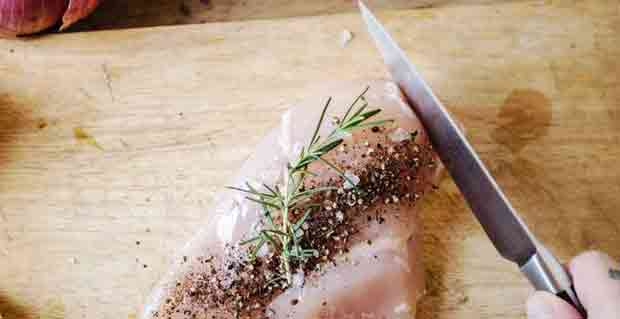
The blades of boning knives can vary in terms of their shape. Some have straight blades, while others have curved edges.
The boning knives that have the straight edges are easier to use. You don’t have to make extra calculations just to get the blade to cut the way you want it to. Novices in the kitchen should start out using boning knives with straight edges.
The curved blades are ideally suited to working with the distinct shapes of animal carcasses. Instead of having to twist your arms in all kinds of ways, you can just allow the curve of the blade to work for you.
Should I Go for a Knife with a Stainless Steel or Ceramic Blade?
Ceramic blades typically work well in knives and some cooks even prefer them to steel. However, since we are talking about a best boning knife, it would be best to just steer clear of the ceramic blades. They are too prone to cracking and one wrong stroke could cause a ceramic blade to shatter against a bone.
How can I Prevent The Boning Knife From Slipping?
Preparation is key when you’re using a boning knife. Before even picking one up, you should wash your hands thoroughly to make sure that your palms and fingers are not slick. If you have some cloth gloves, it’s not a bad idea to put them on as well.
When it comes to the actual knife, try to purchase one that features a slip-resistant handle. At the very least, buy a knife with a bolster. It’s dangerous to use a boning knife that constantly slips from your hands.
You can also clean the knife handle once it starts to feel slippery.
Should I Purchase a Half or Full Tang Boning Knife?
If you see both a half tang and full tang boning knife in a store, you should go ahead and purchase the latter. A full tang knife has a blade that extends all the way to the end of the handle. The full tang knife features better durability and stability while in use.
Working with meat can be a truly enjoyable experience, especially if you are armed with all the right kitchen tools. The boning knife allows you to make incredibly precise cuts. You can create more presentable portions of meat using the right equipment. Though a boning knife is small in stature, it can turn out to be one of the most dependable tools inside your kitchen.



